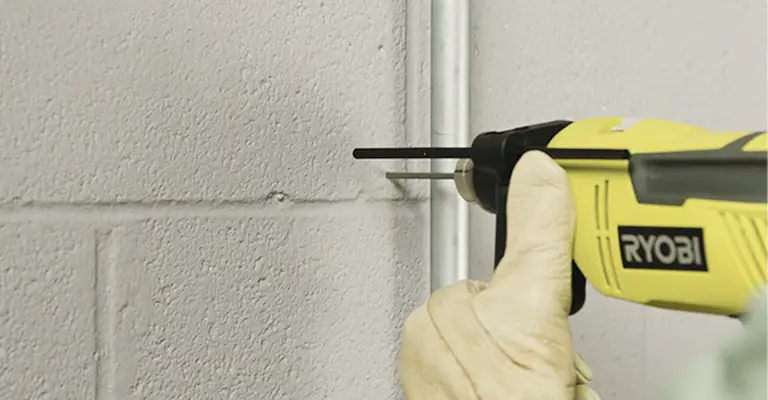Are you tired of staring at blank, boring walls in your apartment? Do you want to add personality and flair to your living space with photos, art, and shelving?
If so, you may be wondering whether it’s possible to drill holes in your apartment walls without causing damage or violating your lease agreement.
Fortunately, the answer is often yes! But before you grab your power drill and start making holes, it’s essential to understand the rules and regulations around drilling in apartments.
In this guide, we will explore the do’s and don’ts of drilling holes in apartment walls and some tips for making the process as easy and stress-free as possible.
So, whether you’re a seasoned DIY enthusiast or a novice decorator, read on to learn everything you need to know about drilling holes in apartment walls.
Drilling Holes In Apartment Walls
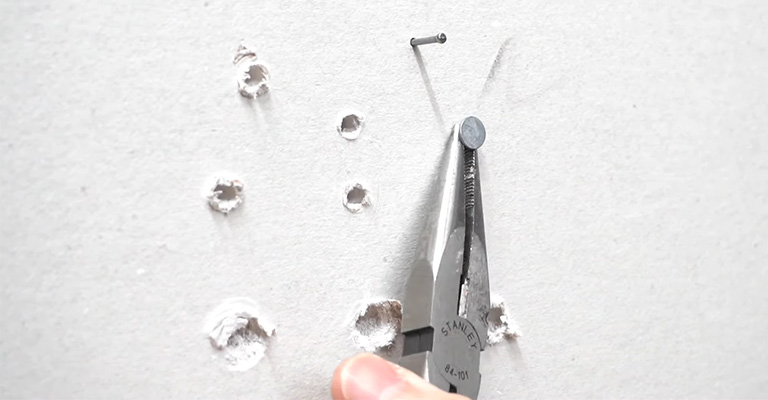
If you repair the holes before moving out, you can poke small holes in your apartment wall. If you do not do these things, you will probably have to pay for damages or forfeit your security deposit.
To make sure you comply with your lease requirements, you should check your specific requirements.
The first thing I’d recommend is reading your lease carefully. By understanding precisely what you can and cannot do and what you are and aren’t responsible for, you will be able to get back your security deposit (or most of it).
Avoid any potential issues if the landlord seeks more compensation for damages. Taking detailed notes and photos and a video walkthrough is also part of my moving process to document existing conditions and damages.
I then take pictures or videos to show differences once I have moved out. There will not be an express statement that says, “you may or may not drill holes in the studs.” in the lease.
However, it will probably mention wall fixtures in relation to modifications made to the home. Obviously, fixtures can be hung from the studs. There is a possibility that these assets may become part of the property. There are exceptions, however.
You may need to remove the hooks from hanging pictures, plaster over the holes, and paint over the plaster if the landlord does not wish to see 100 little pin holes.
Reasons for Drilling Holes in Apartment Walls & Alternative Options
For various reasons, renters across the country desire nails in their apartment walls. Strong nails or screws are often required to support heavier objects.
Mounting a TV
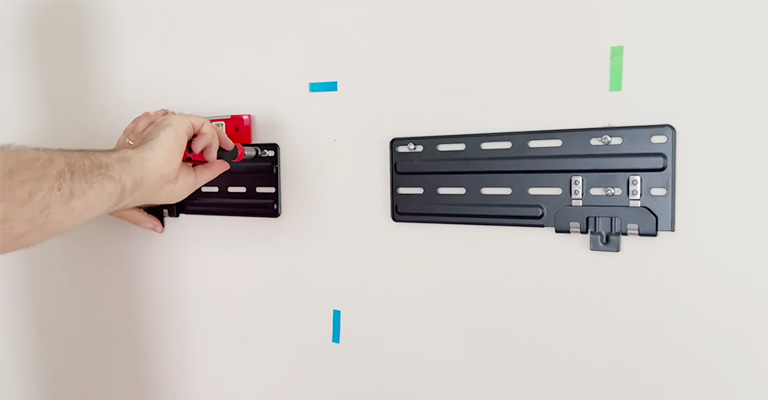
It is attractive and modern to mount the TV on the wall in an entertainment area. It is, however, very heavy to lift a TV, and nails and screws are required for support.
Command Strips cannot handle that much weight in terms of wall mounting a TV. Your TV must likely be mounted on your wall by drilling a mounting kit into the studs. A minimum of four large holes are typically required for this.
Ask your landlord’s permission in writing before mounting a TV on the wall. Your property manager may have rules in place since this project could result in large holes.
Installing Curtains
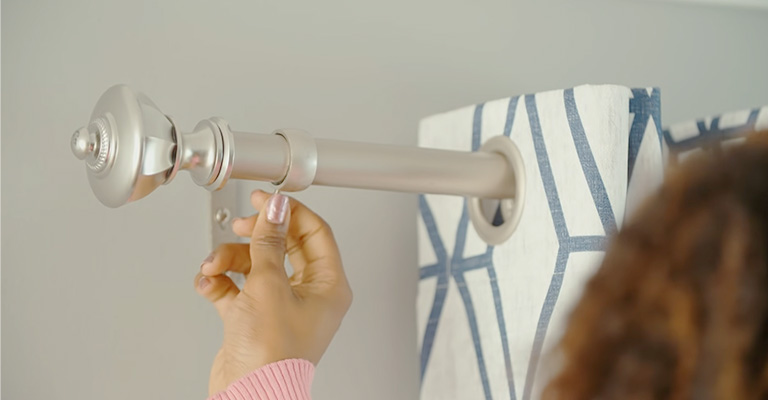
It is common for renters to add more character to their rooms by installing curtain rods and curtains. A generic window blind that comes with the apartment can seem impersonal if left unadorned.
The hardware and screws that come with curtain rods are used to mount these rods. You could have to drill three to seven large holes in your wall if you install a curtain rod the traditional way.
The window trim can also become chipped when holes are drilled rather than screwed into the wall.
Hanging Frames and Artwork
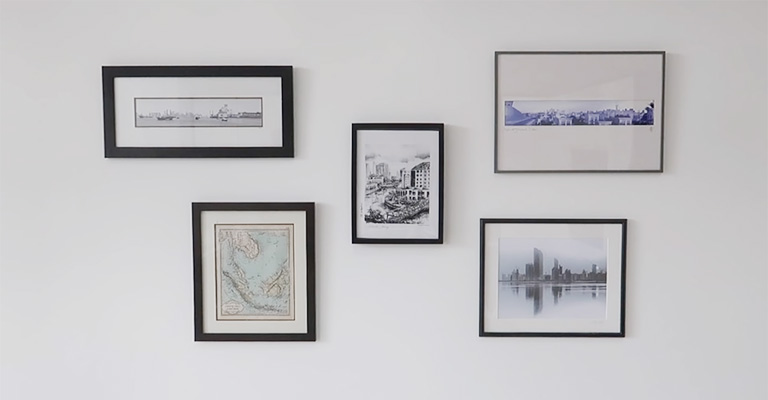
Most people can’t wait to decorate their empty walls with artwork and photos of their loved ones. A canvas or frame covering your walls is one of the best ways to make your apartment feel like a home.
When it comes to installing a gallery wall, it can seem easiest to hammer nails into the walls.
You may, however, find that you have to fill dozens of nail holes after your lease is up. Unless your frame is huge and heavy, hanging your pictures with alternative methods is preferable.
What Happens If You Put A Hole In An Apartment Wall?
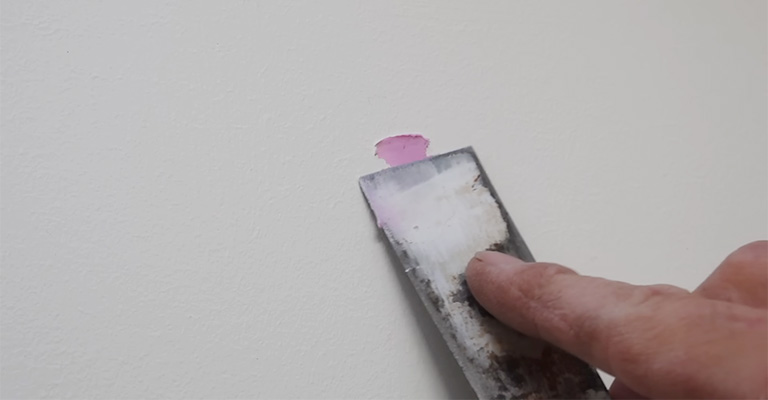
As apartments and units differ, your property manager or landlord will be your primary contact for questions regarding drilling nail holes.
There will sometimes be rules in place; at other times, exceptions will be made based on a case-by-case assessment. If you are taking a tour of the apartment, it would be a good time to ask about nail holes.
Generally, you can make changes to an apartment as long as you return it to its original state before you move out. Paint, nail holes, and contact paper all fall under this category.
Therefore, drilling or nailing small holes in apartment walls is typically fine as long as you fill them before moving out. Be sure to check twice before proceeding, however.
Contact Your Property Manager Directly
In case you can’t find any information about nail holes in your lease, don’t assume all is well. Ensure that the building caretaker or property manager is aware of your plans to drill nails before drilling them.
There is a possibility that your property manager may ask how many nails you intend to use and where.
According to your plans, your property manager may give you the go-ahead, allow some projects to proceed, or request that you refrain from doing any work.
It is generally acceptable for you to hammer nails into the wall as long as the holes are adequately filled before the next tenant moves in.
Reference Your Lease
It’s possible that your lease could answer your question if you have already signed a lease and gotten the keys. You may have to ask your landlord if you can drill holes.
It is possible that your lease stipulates that you cannot hammer nails into the wall and indicates how much money will be deducted from your security deposit per nail hole.
You should always follow your lease’s nail-hole rules so that you get your full security deposit back when you move out.
How to Repair Holes in Your Apartment Walls?
You don’t have to apologize for wanting to put holes in your apartment walls. If you choose to do so, there are many legitimate reasons why.
The lease agreement, however, will require you to make good any damage you caused to get your security deposit back.
Sheetrock putty (also called joint compound) and possibly drywall patches are necessary if you have cut holes in walls made from drywall.
Veneer plaster and joint compound are also needed if the walls of your apartment are plaster. A DIY solution for tiny holes can also be applied with white toothpaste.
You’ll need to use a wood filler product to fill in the holes you’ve made in the wood trim. You’ll need to sand down the patch spot in all cases once it dries to make it the same color as the other wall or trim.
Once you have repaired the holes in the walls, you would also like to paint the wall in the same color as the patch to conceal it.
You need to take care during this step and make sure you use putty that matches your wall (if you have white walls) or blend the paint with care.
The apartment complex might charge you if your patch stands out (badly), so you might have to repaint the entire apartment or wall. I am not trying to scare you, but you should be aware so that you can avoid that scenario if possible.
To summarize, apartment walls usually allow holes to be punched. In that case, the walls must be restored to their original condition as your responsibility as a landlord.
Your landlord may charge you or deduct the cost of the repairs from your security deposit if you do not make repairs.
Do You Need to Fill Holes When Moving?
In most apartment buildings, you’ll need to fill in holes you’ve made in the walls when you move out.
Some landlords, however, are more lenient or have a different policy and may not require you to fill in any small holes (such as nail holes). Getting clarity on expectations can be achieved by consulting your lease or landlord.
Can Landlord Charge for Nail Holes?
It is possible for a landlord to charge for nail holes on walls or to deduct a portion of the security deposit from a tenant’s security deposit.
The problem is that not all landlords actually charge for nail holes, especially if they are tiny or unnoticeable. To find out more about your lease, you can check it.
Final Words
If you fix the holes before moving out, you can usually drill small holes in your apartment walls.
You may have to pay for damages or surrender your security deposit otherwise. There are differences between leases, so ensure you’re following your specific requirements.

